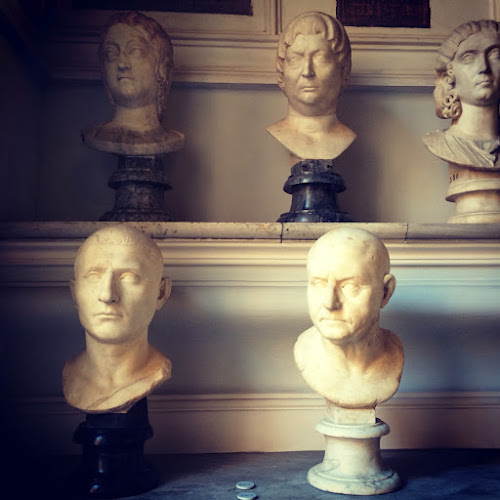One of the best parts of my year, yet one of the hardest, is choosing for my mentorship program each year. This year, more than 30 of you shared your dreams for the museum field, your personal hopes for the future, your creative heroes, and objects that moved you emotionally. Thanks to all of you and I only wish I had time enough for everyone.
Related wish: that my other more experienced colleagues would do the same. So I'll begin with that offer. If you think you have something to offer as a mentor, be in touch with me and we'll see how we could expand the pool of people willing to engage in deep conversations about the future. I can guarantee that you'll gain as much if not more than you give. Our professional organizations are mov slowish or not at all on this, and I know from my JHU students and from applicants that more mentorship opportunities are sorely needed. I can move faster than an organization so let's get going!
I wanted to share some of the great responses. Creative heroes: only one person got mentioned twice. Jim Henson of the Muppets. But also on applicants's lists were David Bowie and David Lynch, a sit-com writing dad, Lin Manual Miranda, Tina Fey and Amy Poehler, several colleagues, and others.
Emotional objects: the range of objects was incredible from the way a child's shoe in a Holocaust exhibit moved a young mom, to human remains, to contemporary art, to a frozen piece of mutton, and emotions ranged from joy to deep sadness and everywhere in between.
My two choices were surprising to me and in retrospective, they have some connections I hadn't quite articulated in my head before having our first conversations. David Lewis and Amanda Guzman have or are working on their PhDs, and they both come from outside the history world. As the field considers how what kinds of training and degrees are useful, it's intriguing to consider the place of emerging scholars in museums (and, whether it was all worth it). I think my world view will be expanded by theirs, which is one of my hopes in the mentorship.
They'll each be writing blog posts over the course of the year, so you'll hear more from them directly, but for now, a brief introduction in their own words.
Dave Lewis (and, by the way, the first male, and as always, one of very few male applicants ever, a conversational subject for another day.).
Dave is Curator of Collections and Digital Media at the Birthplace of Country Music Museum in Bristol, TN. It's his first museum job and he will defend his dissertation this summer on music, AIDS and public health in Trinidad and Tobago.
His big questions framed around several areas--how do we think about collections in ways that matter, and in ways that reflect honest relationships with the communities such material comes from? He's also interested in thinking about how museums can participate in tourism events, and at the same time, enhance our roles as places of learning. Plus (Dave had a long list of questions) thinking about broad digital accessibility, and how collections can be more valuable in ways both economic and intellectual.
His creative hero: Diamande Galas. Check her out.
Amanda Guzman
Amanda's currently a PhD student at Berkeley in anthropology. She's interned at the Smithsonian, both at the Museum of Natural History and the Museum of the American Indian. She has a particular interest in the ways museums with Caribbean archaeological collections engage with both the diaspora and those in the community on the islands. Some of her big questions:
- What constitutes a compelling museum narrative?
- Should museums continue to be object-oriented display environments?
- How can one balance academic concerns and creativity in museum work?
The change she'd like to see, like many of you, comes from her own experiences.
I would personally advocate for the introduction of an earlier, easily accessible stage of deepengagement with museums - specifically as a potential career option. As a native New Yorker with ahistory buff mother, museums were ever-present in my childhood as trans-formative places ofencountering new social worlds through the exhibition of often unfamiliar objects. Yet, it was only through free educational programs (e.g. taking anthropology classes) and internships (e.g. giving toursto school groups and working in an archaeology laboratory) respectively in both high school andcollege, that I became aware of my own ability to participate in museums in a role other than that of avisitor. These experiences are what introduced me to the intersection of the fields of anthropology andmuseum studies. They informed my decision to major in anthropology and current pursuit of a PhDdissertation topic which privileges the analysis of the history of anthropology and the history ofmuseum collecting in the given geographic area of the Spanish Caribbean, specifically Puerto Rico.
I'm looking forward to a great year of conversations and my immense thanks to all of you who applied--I hope all of our paths cross in person at some point as you set sail on your careers.



























